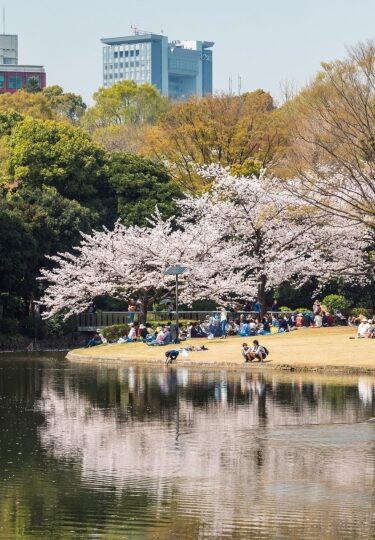The best time to visit Japan is in the spring, for the exquisite cherry blossom, or in the fall, when the trees take on vibrant hues of scarlet and orange. The summer months of July and August are a wonderful time for hiking and enjoying the mountains.
Japan is a big country, its archipelago stretching more than 1,900 miles from north to south. It’s also very mountainous. As such, you’ll find considerable climate variations, from subtropical to temperate.
The climate is affected by mountains and ocean currents as well as latitude. Whenever you visit, you’ll find a fascinating culture, exceptionally polite and friendly people, exquisite temples, and dazzlingly beautiful scenery.
Visiting Japan By Season
Summer
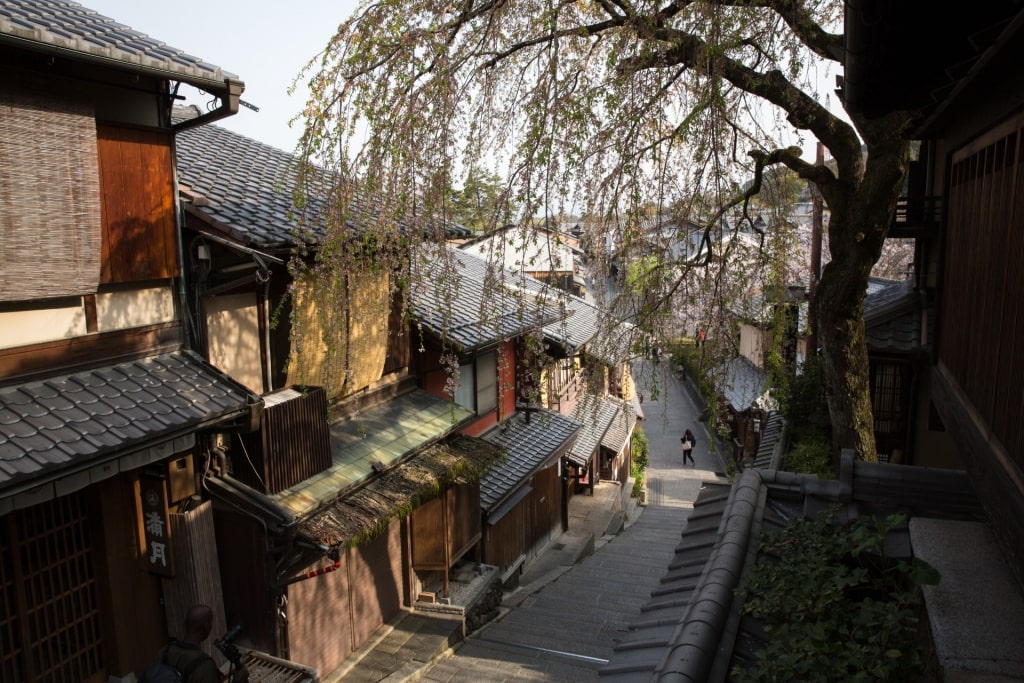
Kyoto
June and July in Japan bring the rainy season, which many rice farmers welcome. During these hot and humid months, locals often seek respite by visiting seaside towns and exploring the cooler mountain regions.
August is the hottest month of the year in Tokyo, with average temperatures of 82.2°F (27.9°C). It’s also the warmest month of the year in Kyoto, with highs of 84°F (29°C).
June, though, is the wettest month on Kyushu Island in the south, when Nagasaki can receive an impressive 22.4 inches (970mm) of rain. This is the rainy season in Kyoto, too, although there’s a lot less precipitation, with 9.4 inches (240mm) typical.
Fall
September, October, and November are wonderful months to visit Japan to witness the vibrant fall colors. The weather is generally fine during fall in Japan, but parts of the country do receive considerable rainfall; in Tokyo, expect 9.3 inches (235mm) in October. By November, this has decreased, and the days are cool and generally pleasant.
Kyoto, on the other hand, is wetter in September, with October the best fall month to visit.
Winter
Winter in Japan varies very much according to where you visit. The south is generally dry and cool, but the north is bitterly cold and snowy.
Further south, Tokyo’s winters are cold, with average January temperatures of 42.9°F (6.1°C) but low rainfall—just 2.4 inches (60mm). Snow in the city is unusual.
Spring
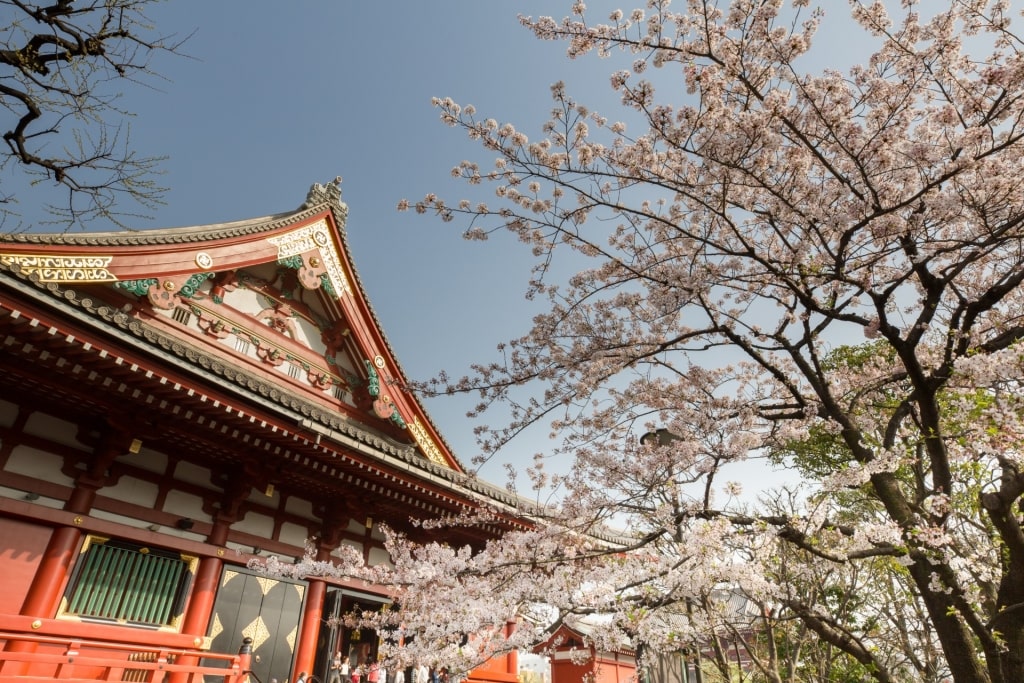
Sensoji Temple, Tokyo
March, April, and May is, for many, the best time to go to Japan, because the cherry blossom is so exquisite. The climate is generally perfect during spring in Japan, too—not too hot and little rainfall.
May brings incredible sightseeing weather in Tokyo, with average highs of 66.9°F (19.4°C). If you want to see the cherry blossom, be aware that the season begins in March in the south, with the north in bloom later, in April.
When Is Rainy Season?
The warm, humid rainy season in Japan is from June to early July, although exact dates vary up and down the country. It’s also not rainy the whole time, although the sky may be overcast. Hokkaido, in the north, manages to dodge the rainy season completely, while Okinawa’s rainy weeks come before those of Tokyo.
The rains mean the many parks and gardens are at their most lush and beautiful. This is also when the hydrangeas are in full bloom. Many Japanese head for the hills or to the coast during June, where it’s cooler. If you are visiting around this time, bring sturdy footwear and a light waterproof jacket.
In the winter months, precipitation falls as snow in the north of Japan, where there’s a thriving winter sports scene.
When Is High Season?
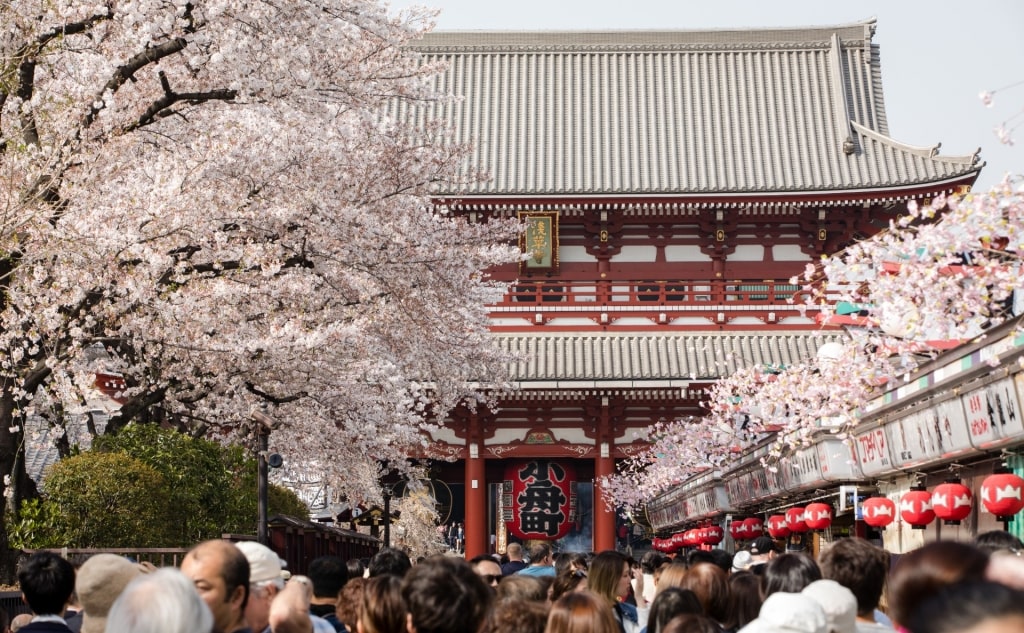
Sensoji Temple, Tokyo
Japan’s high seasons are spread throughout the year. March, April, September, and October are peak times for viewing nature at its finest, in the cherry blossom and the fall colors. The first week of May is known as Golden Week, when a lot of Japanese take their vacation domestically.
When Is Shoulder Season?
While Japan is always busy with tourism, November is one of the quieter months. The weather tends to be cool and mild, with the fall colors still very much present. Mid to late May is another shoulder period, between the end of the cherry blossom season and the beginning of the hotter, rainier summer in Japan.
When Is Low Season?
Unless you’re visiting for skiing, December to February tends to be the quieter time in Japan. In the central and southern areas, the weather is cooler but not necessarily wet, making low season a good time to visit Japan if you’re not concerned about warm weather.
June and July is also a quieter time to visit as this is the rainy season—but there is still much to enjoy during these months.
Read: What to Pack for Japan
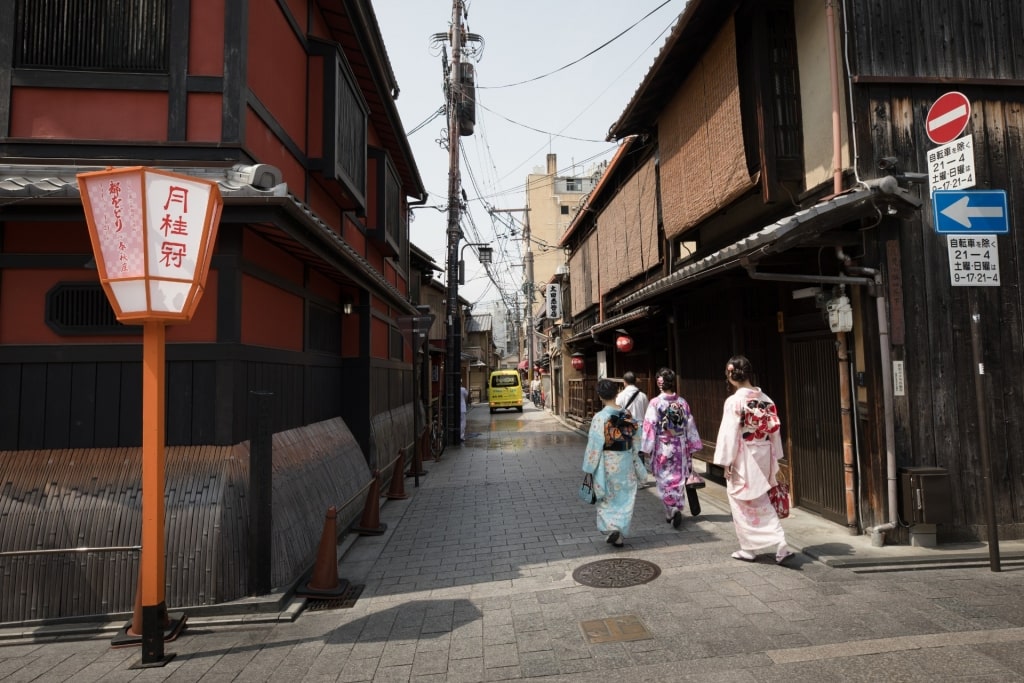
Kyoto
Embark on a journey of discovery aboard one of our cruises to Japan, where ancient traditions blend seamlessly with modern wonders. Explore our diverse itineraries and start planning your unforgettable adventure today.
